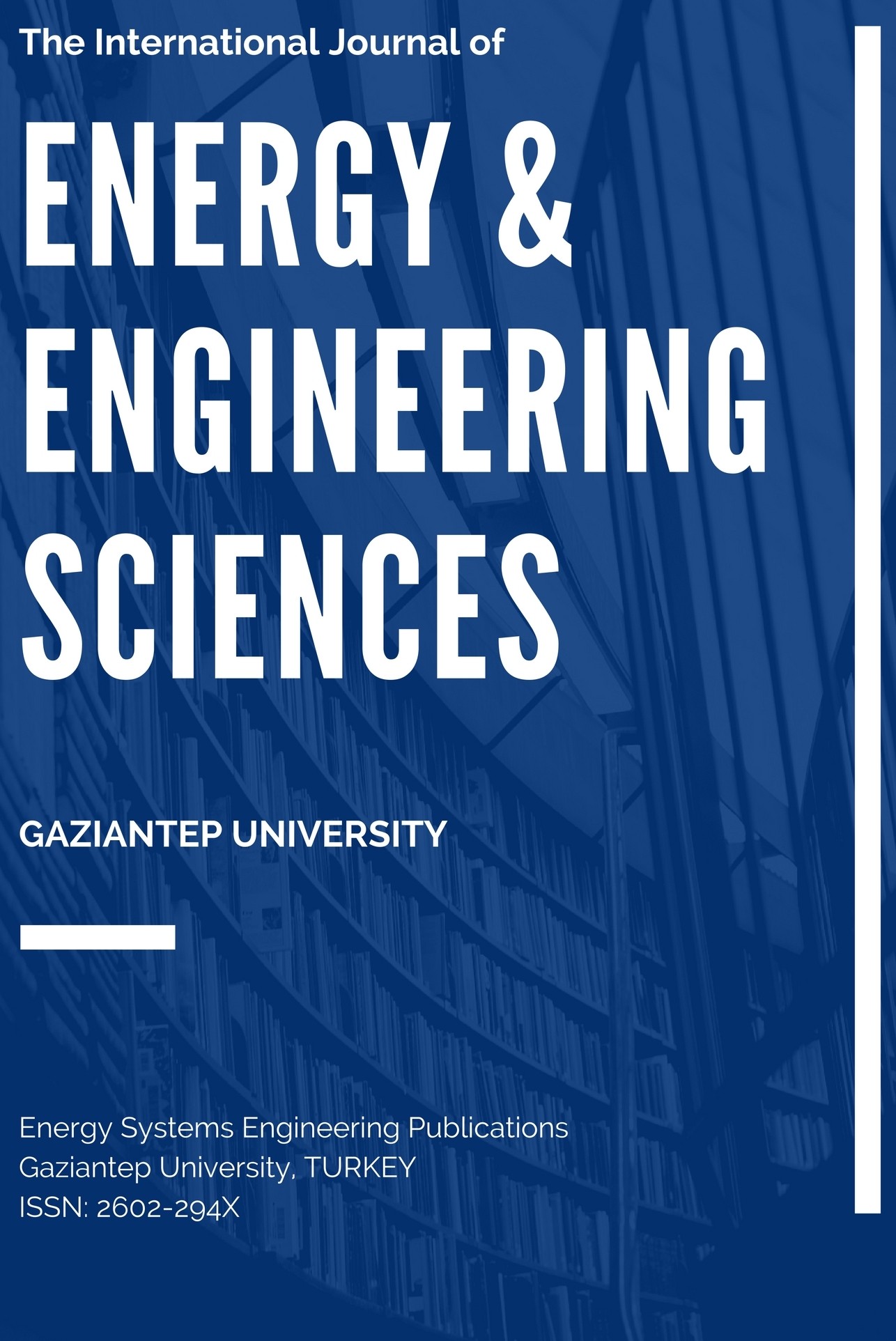AN EVALUATION ON SOLAR POWERED HYDROGEN PRODUCTION
AN EVALUATION ON SOLAR POWERED HYDROGEN PRODUCTION
Hydrogen is considered the lightest, simplest and most plentiful element in the universe. It can be a source of new, renewable and almost the cleanest fuel of the future. Also, solar energy has a significant share among renewable energy source. Especially photovoltaic power plants represent a good solution concerning electric energy supply. Turkey is looking for environment friendly renewable energy sources like most country. Photovoltaic power plants can be a sustainable energy source with huge potential for Turkey. Bursa province is located in the northwestern region and there are more efficient regions in terms of solar energy such as south region in Turkey. Soğuksu photovoltaic solar power plant is the first large scale power plant with 7 MW peak power in Bursa. In this study, generation values of a power plant were observed under actual operating conditions. The generation data showing the actual daily electricity generation values have been recorded in the library of the plant. This data has been used to investigation of daily hydrogen production performance of the power plant in theoretically. Proton Exchange Membrane (PEM) electrolyzer was selected for electrolysis of water. According to results, the maximum mass flow of hydrogen production can be 0.0625 kgs-1H2 for peak load and the electrolyzer can produce 1630 kg hydrogen in a clear summer day.
___
- [1] Saadi, A., Becherif, M., Ramadan, H. S. Hydrogen production horizon using solar energy in Biskra, Algeria. Int. J. Hydrogen Energy 2016; 41: 21899 – 21912.
- [2] Hepbaslı, A., Ulgen, K., Eke, R. Solar Energy Applications in Turkey. Energy Sources 2004; 26: 551 – 561.
- [3] Kumar, B. S. Sudhakar, K. Performance evaluation of 10 MW grid connected solar photovoltaic power plant in India. Energy Reports 2015; 1: 184 – 192.
- [4] Incekara, C. O., Ogulata, S. N. Turkey’s energy planning considering global environmental concerns. Ecological Engineering 2017; 102: 589 – 595.
- [5] Boran, F. E., Menlik, T., Boran, K. Multi-criteria Axiomatic Design Approach to Evaluate Sites for Grid-connected Photovoltaic Power Plants: A Case Study in Turkey. Energy Sources, Part B: Economics, Planning, and Policy 2010; 5: 290 – 300.
- [6] Kanoglu, M. Yilmaz, C. Abusoglu, A. Geothermal energy use in hydrogen production. Journal of Thermal Engineering 2016; 2: 699-708.
- [7] Cilogulları M., Erden M., Karakilcik M., Dincer I. Investigation of hydrogen production performanceof a Photovoltaic and Thermal System, Int. J. Hydrogen Energy 2017; 42: 2547 – 2552.
- [8] Boudries, R., Khellaf, A., Aliane, A., Ihaddaden L., Khida F. PV system design for powering an industrial unit for hydrogen production. Int. J. Hydrogen Energy 2014; 39: 15188 – 15195.
- [9] Likkasit, C., Maroufmashat, A., Elkamel, A., Ku, H., Fowler, M. Solar-aided hydrogen production methods for the integration of renewable energies into oil & gas industries. Energ convers manage 2018; 168: 395 – 406.
- [10] Pereira., C. A., Coelho, P. M. Fermandes, J. F., Gomes M. H. Study of an energy mix for the production ofhydrogen. Int. J. Hydrogen Energy 2017; 42: 1375 – 1382.
- [11] Yilmaz., C., Kanoglu, M. Thermodynamic evaluation of geothermal energy powered hydrogenproduction by PEM water electrolysis. Energy 2014; 69: 592 – 602.
- [12] Yuksel, E. Y., Ozturk, M. Thermodynamic and thermoeconomic analyses ofa geothermal energy based integrated system forhydrogen production. Int. J. Hydrogen Energy 2017; 42: 2530 – 2546.
- [13] Saka., K. Kaynakli, Ö., Yamankaradeniz. R. (2018) Bursa’da bulunan şebeke bağlantili bir pv güç santraliningünlük elektrik üretimi. IV. Uluslararası Katılımlı Anadolu Enerji Sempozyumu18-20 Nisan 2018, Trakya Üniversitesi, Edirne, 1479 – 1485.
- ISSN: 2602-294X
- Yayın Aralığı: Yılda 2 Sayı
- Başlangıç: 2016
- Yayıncı: Gaziantep Üniversitesi
Sayıdaki Diğer Makaleler
ON THE USE OF DEEP LEARNING METHODS ON MEDICAL IMAGES
PERFORMING ACCURATE SPEAKER RECOGNITION BY USE OF SVM AND CEPSTRAL FEATURES
OPTIMAL DESIGN OF HIGH PERFORMANCE INTERIOR PM MOTOR FOR ELECTRIC VEHICLE
AN EVALUATION ON SOLAR POWERED HYDROGEN PRODUCTION
Kenan SAKA, Ahmet Serhan CANBOLAT
NEURAL NETWORK ESTIMATION OF MUTUAL INDUCTANCE VARIATION FOR A SHADED-POLE INDUCTION MOTOR
